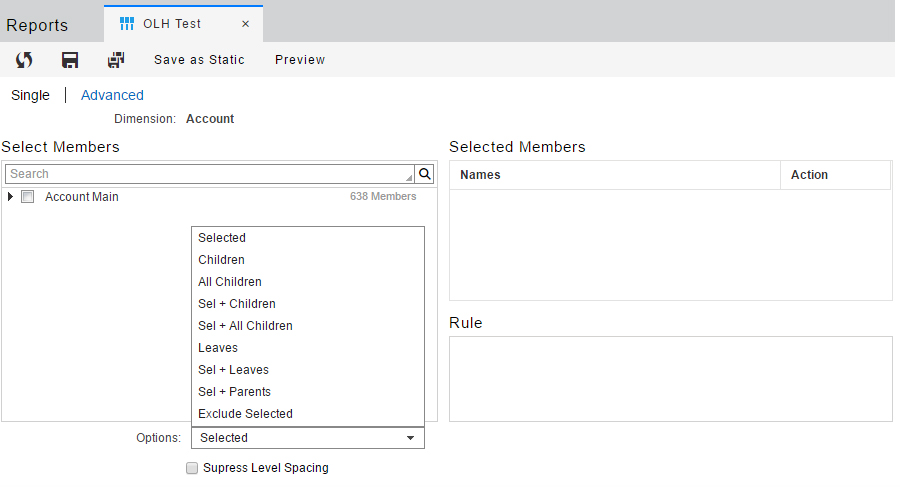- 1 Minute to read
- Print
- DarkLight
- PDF
Build Dynamic Reports Using Report Sets
- 1 Minute to read
- Print
- DarkLight
- PDF
A Dynamic Report consists of a report grid. For example, an income statement report might be shown on the column axis and income statement accounts along the rows axis. At the intersection of each member along each axis, a cell displays the measure data for the selection of company and department.
You can use Report Sets as rows or column axis members in a Dynamic Report. Report Sets are individually designed on a specific dimension. Once created they can be referenced in multiple reports. Report Sets on the row of a Dynamic Report are referred to as Row Sets. Report Sets on the column axis of a Dynamic Report are called Column Sets.
A few examples of Report Sets are; Income Statements, Balance Sheets, and Cash Flow statements on an Account dimension or yearly, quarterly, and monthly on a Time dimension.
When a Static or Dynamic Report Set is used on the row axis of a Dynamic Report, the primary dimension which is used in the Report Set is reflected as the column header in the report. This is also applicable to the Dynamic Report Set used in combination with other Report Sets and dimensions.
Adding a Dynamic Report Set
Dynamic Report Sets are created using Rules, which fetch members directly from the dimensional hierarchies. Dynamic Report Set performance is directly linked with the dimension hierarchy setup.
The image below shows the screen that appears when you create a new Dynamic Report Set.

Options for Rule Types
Add Single or Multiple Dimension or Advanced Rules by clicking the tab at the top of the Add or Edit Rule page.
Selected (default)—Members in the tree, as selected by the user
Children—Immediate children of members, as selected by the user
Selected + Children—Selected members, and their immediate children
Selected + All Children—Selected members, and all levels of children under them
Leaves—Leaf members at all levels under the selected members
Selected + Leaves—Selected members, and their leaf members, at all levels
Selected + Parents—Selected members, and their immediate parents
Exclude Selected—All members in the tree, excluding those selected

